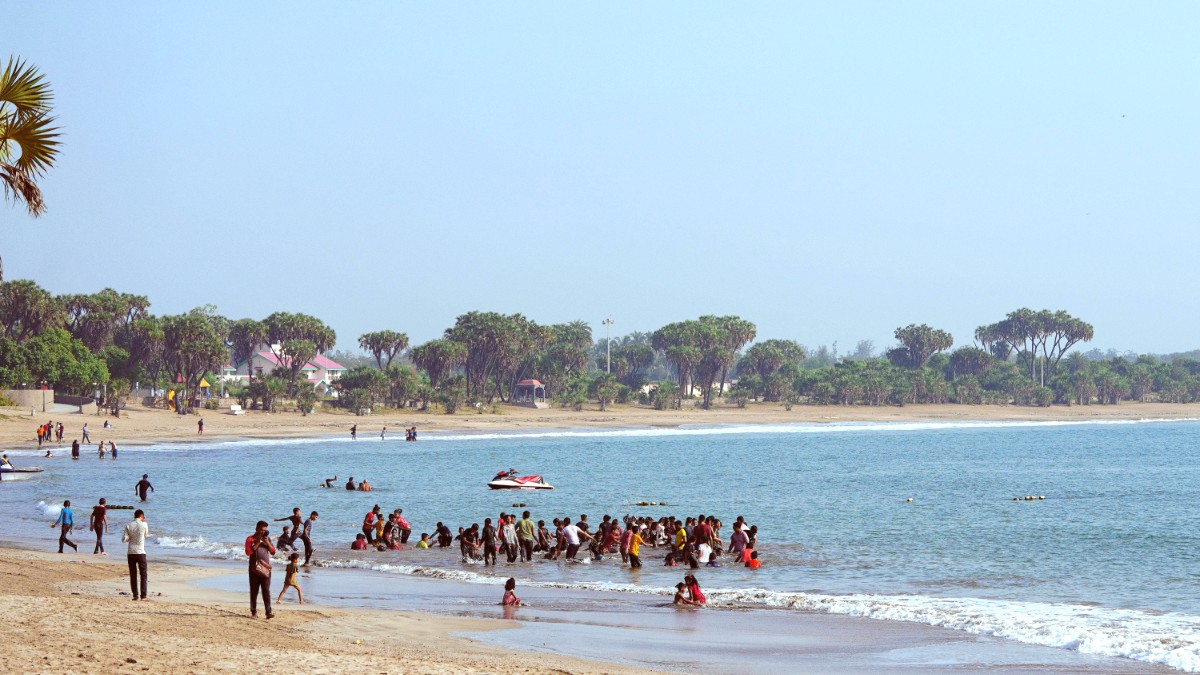
Gujarat, India
Imagine a place where the echoes of ancient trade routes meet the gentle lapping of waves. Diu, a jewel in the Arabian Sea, presents such an experience. This small island, once a Portuguese stronghold, now welcomes you with its quiet beaches, historic structures, and a distinct cultural identity. Forget the rush of typical tourist spots. Diu a peaceful retreat, inviting you to slow down and immerse yourself in its unique charm. Discover fortresses that tell tales of centuries past, churches that inspire awe, and beaches perfect for unwinding. Diu is more than a destination; it is an invitation to explore a slice of history nestled within a tranquil coastal setting.
Diu is a small island territory, separated from the coast of Gujarat by a narrow creek. Situated off the southern tip of the Saurashtra peninsula, it is surrounded by the Arabian Sea, giving it a pleasant maritime climate. The island covers a small area, making it easy to traverse and explore.
Its coastal position has influenced its history, economy, and culture, with fishing and tourism being major activities. The terrain is mostly flat, with gentle slopes leading to its many beaches. A bridge connects the island to the mainland, providing easy access to the Gujarat region. This island setting a distinct and accessible coastal getaway.
Diu is a rich and layered history, mainly shaped by its strategic location and Portuguese colonial past. Before Portuguese arrival in the 16th century, Diu was a significant trading port, controlled by various local powers, including the Sultanate of Gujarat. Its deep natural harbor made it a valuable prize for controlling maritime trade routes in the Arabian Sea.
The Portuguese established their control after a series of fierce battles, most notably the Siege of Diu in 1538 and 1546. They built the massive Diu Fort, a testament to their military engineering and enduring presence for over 450 years. Visitors find charming old churches, narrow winding streets, and an unique blend of Indo-Portuguese traditions.
Significant trading port under various local rulers.
Portuguese establish control after major sieges (1538, 1546).
Over 450 years as a Portuguese territory, marked by extensive architecture.
Incorporation into India along with Goa and Daman.
A living museum, showing its Indo-Portuguese heritage.
Diu remained a Portuguese territory until 1961, when it was incorporated into India along with Goa and Daman. This history Diu a living museum, offering visitors a direct connection to a fascinating colonial chapter.
The island's architecture, especially the grand Diu Fort and old churches, reflects its Portuguese colonial past. These structures are enduring symbols of the island's strategic importance and its layered history.
Diu's cultural identity is an unique blend of Indian and Portuguese influences, evident in its customs, cuisine, and local lifestyle. This fusion creates a distinct atmosphere for visitors.
The island's past as a significant trading port and a heavily contested territory shapes its present-day charm and cultural landscape.
Diu a captivating snapshot of tranquil coastal life intertwined with rich heritage. It is a compact island, allowing easy exploration of its attractions.
The landscape features golden beaches, swaying hoka palm trees, and the clear waters of the Arabian Sea. The most striking feature is the formidable Diu Fort, a grand structure with panoramic views and a deep dive into the island's past.
Golden beaches, hoka palms, and clear Arabian Sea waters define Diu's serene landscape.
The formidable Diu Fort and charming colonial architecture are main attractions.
A relaxed pace of life with fresh seafood a highlight of the local cuisine.
Life moves at a relaxed pace, contrasting sharply with the hustle of larger Indian cities. Visitors find a welcoming atmosphere and a range of activities from water sports to quiet contemplation.